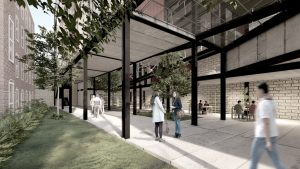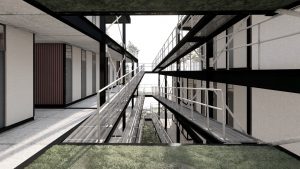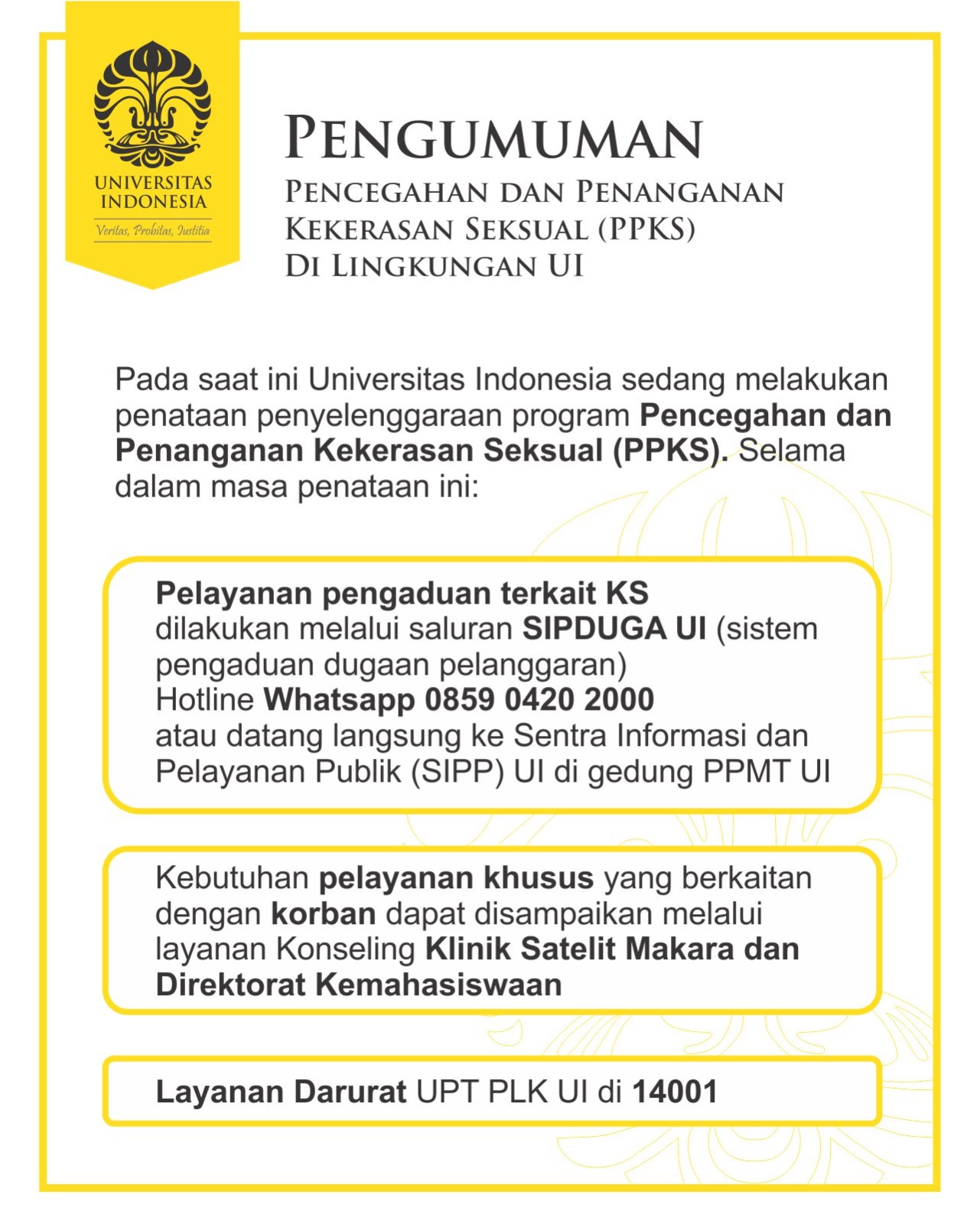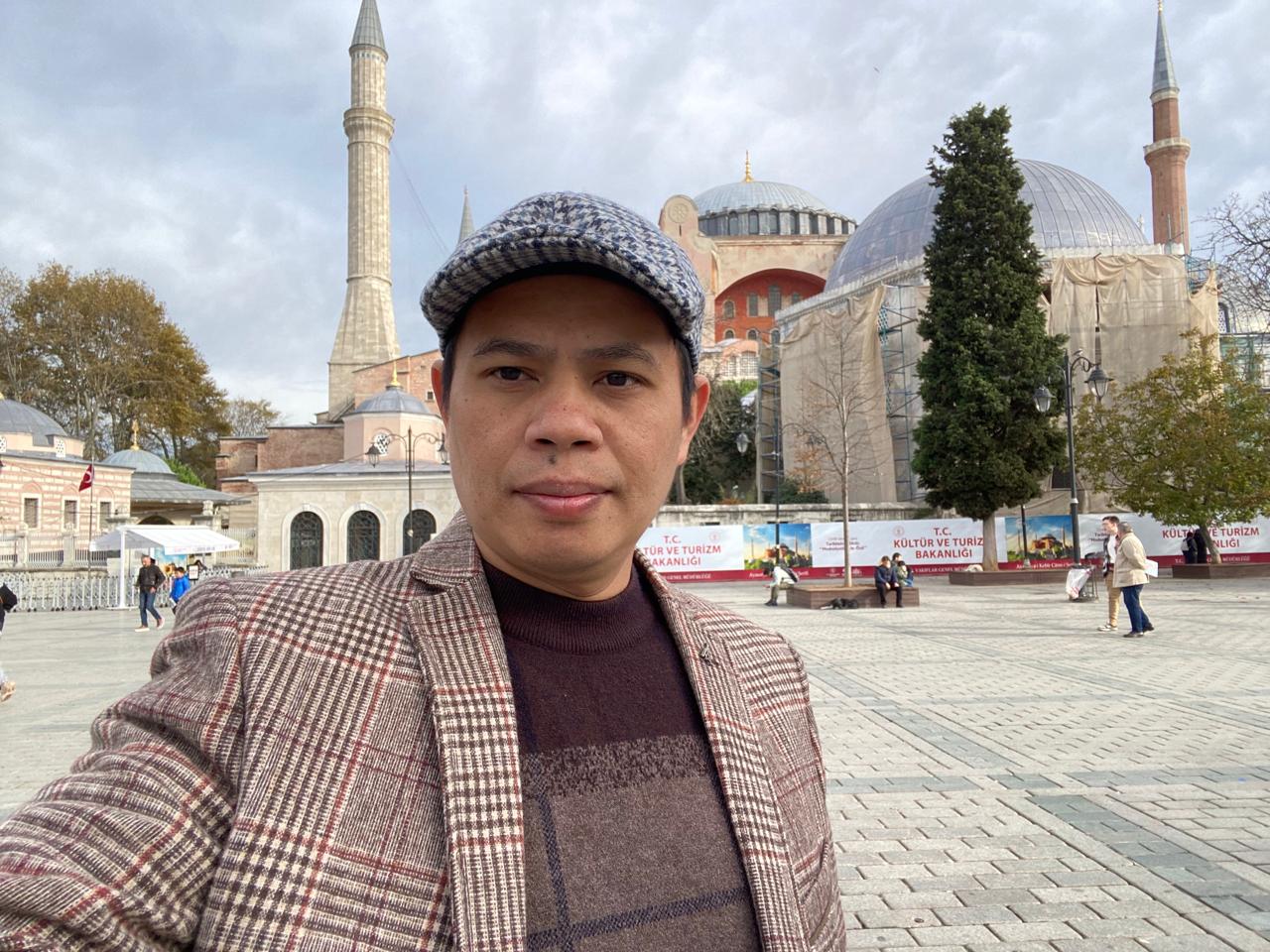
Three students of the Department of Architecture, Faculty of Engineering, Universitas Indonesia (FEng UI), designed “The Passage”, a flat design that can be a solution in providing housing for urban homeless people during the pandemic. The design earned Aurelia Audrey, Rifki Fauzan, and Tannia Aurellia second place in the international competition Skid Row 2021: International Design Competition. The international competition was organized by The American Institute of Architects (AIA) Committee on Design.
Dean of FEng UI Prof. Dr. Heri Hermansyah expressed his appreciation for the international achievements of FEng UI architecture students and their mentors. The FEng UI team was mentored by lecturers of the FEng UI’s Department of Architecture and professional architects, namely Ir. Evawani Ellisa, M.Eng, Ph.D., Baiq Lisa Wahyulina, S.T., M.Ars, IAI, and Farrell Jeremiah, S.Ars. The Passage competed with other works from around the world in the competition held on October 8, 2021 – January 3, 2022.
“Homelessness is an inherent problem and a crisis in most cities around us. In the slums of the Skid Row District of Los Angeles, United States, there are 10,580 people and about half of them are homeless. Surprisingly, the majority of these slum dwellers are adults of productive age. This is a problem because there is a certain mindset of the homeless that keeps them stuck living in the slums without any hope of changing their fate,” says Aurelia regarding the condition of the Skid Row District residents.

Tannia Aurellia explains the design philosophy of The Passage as a narrow path, but also a place to live a big and dynamic life. “We want The Passage to be a push forward and always move towards a better, fulfilled, safe and healthy way of life. Through this design, we want to make a difference for people to open their minds to achieve productivity and togetherness. An endeavor and also hope for the homeless to live a better future,” he said.
Evawani Ellisa, who is known as an urban design expert, explained, “This design is expected to be an answer to the three main problems faced by homeless people, namely unproductivity, discrimination, and the absence or lack of protection for them. We want The Passage to be a space to pursue productivity, ensure protection for individuals to improve their opportunities in society and as a platform that supports community-based activities that promote equality and social interaction.”
“Circulation becomes one of the most important and fundamental design themes, where it provides a living experience that is not entirely foreign to them. The habitual interactions and life as a homeless person robs them of the opportunity to have healthy positive interactions. So, the idea here is to create a space with openness and flexibility that focuses on the positive aspects of street life (dynamic living and social interaction), and recreate these aspects in a safer and better space to live in,” Rifki said.

“The design of The Passage is two main building masses embraced by voids to emphasize the strategy of forming a linear main circulation space. The connecting circulation element between units is designed in the form of a ramp that forms a multifunctional linear communal space that can be utilized for self-development activities of the homeless. The ‘staging‘ building mass divides the hierarchy between functions, the lower floor level is oriented for public functions, while the higher floor level is the realm of private functions. The lay-out is open plan to respond to the challenges of future space needs, both in pandemic and non-pandemic conditions,” said Baiq Lisa Wahyulina. He explained that the lay-out and allocation of space is ‘convertible‘.
The community room is placed at the very front. It is an open space filled with greenery and stairs with seating areas. The aim is to create a welcoming environment for the community, to increase interaction with each other, and to conduct social activities for the community.
Starting from the second to the sixth floor, the central space of the building features a long ramp that connects all levels containing residential units to the top of the building. Every time you move to the next floor through the ramp, the residents will pass through a terrace equipped with green open space. It functions as a buffer and common space for residents on each floor.
Prof. Heri hopes that the achievements of these students can motivate other architecture students to develop their interest and potential in the field of architecture and increase their confidence in competing internationally. He hopes, “The Passage design can be implemented in Indonesia by adjusting the existing conditions as an alternative solution to the problem of homeless people and beggars which are increasingly prevalent in big cities in Indonesia.”
Author: Tikka Anggraeni | Editor: Mariana Sumanti



